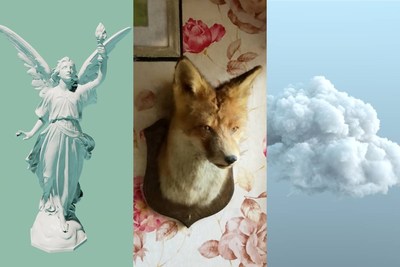This winter, the Technical Papers program received more than 600 submissions, a record tally in recent years that was boosted by the addition of a new, shorter Conference Papers format. Outside of submissions, a number of selections in the program have been curated from peer-reviewed journal ACM Transactions on Graphics (TOG). Members of the review committee chose each project through a double-blind process.
"I am excited to share the 2022 program, which showcases the very best of scientific contributions from the past year," shared SIGGRAPH 2022 Technical Papers Chair Niloy J. Mitra, of University College London and Adobe Research Lab London. "The works represent innovative research that meaningfully combines machine learning with traditional approaches, among other disciplines. The new Conference Papers track is designed to capture exciting, emerging ideas, and the authors have truly outdone themselves. I am looking forward to seeing them present their work in Vancouver."
Alongside research from Yale University, Google, MIT, Meta, Ubisoft, Dartmouth College, and Autodesk, highlights from the 2022 Technical Papers program include:
Instant Neural Graphics Primitives With a Multiresolution Hash Encoding
Authors: Thomas Müller, Alex Evans, Christoph Schied, and Alexander Keller, NVIDIA
Neural networks emerged as high-quality representations of graphics primitives, such as signed distance functions, light fields, textures, and the likes. This paper can train such primitives in seconds and render them in milliseconds, allowing their use in the inner loops of graphics algorithms where they previously may have been discounted.
Character Articulation Through Profile Curves
Authors: Fernando de Goes, William Sheffler, and Kurt Fleischer, Pixar Animation Studios
This paper presents a new approach for character articulation that produces detail-preserving deformations controlled by 3D curves that profile the deforming surface. To propagate the curve articulation over the character surface, it introduces a surface-cutting algorithm and derives a cut-aware numerical discretization that provides harmonic interpolations with curve discontinuities.
CLIPasso: Semantically-Aware Object Sketching
Authors: Yael Vinker, Tel Aviv University; Ehsan Pajouheshgar, Jessica Y. Bo, and Roman Christian Bachmann, Swiss Federal Institute of Technology (EPFL); Amit Haim Bermano and Daniel Cohen-Or, Tel Aviv University; Amir Zamir, Swiss Federal Institute of Technology (EPFL); and Ariel Shamir, Reichman University
For this paper, the team presents "CLIPasso", a method for sketching objects at different levels of abstraction. The research defines a sketch as a set of strokes and uses a differentiable rasterizer to optimize the strokes' parameters with respect to a CLIP-based perceptual loss. The abstraction degree is controlled by varying the number of strokes.
Neural Jacobian Fields: Learning Intrinsic Mappings of Arbitrary Meshes
Authors: Noam Aigerman, Adobe Research; Kunal Gupta, University of California San Diego; Vladimir G. Kim, Adobe Research; Siddhartha Chaudhuri, Adobe Research; Jun Saito, Adobe Research; and Thibault Groueix, Adobe Research
This research introduces a framework for deep learning of deformations of meshes. The trained network is highly accurate and produces realistic results that can be applied to meshes of arbitrary triangulations and not a fixed one. The paper shows various experiments, such as UV mapping, elastic deformations, and learning to repose humans.
R2E2: Low-latency Path Tracing of Terabyte-scale Scenes Using Thousands of Cloud CPUs
Authors: Sadjad Fouladi, Microsoft Research and Stanford University; and, Brennan Shacklett, Fait Poms, Arjun Arora, Alex Ozdemir, Deepti Raghavan, Pat Hanrahan, Kayvon Fatahalian, and Keith Winstein, Stanford University
R2E2 is a system for path tracing massive scenes using a "supercomputer" constructed on the fly from thousands of small, serverless cloud computing nodes. The research shows that scenes with a terabyte of geometry and texture can be path traced at high resolution in tens of seconds using thousands of commodity cloud workers.
For even more program highlights, check out the recently released Technical Papers Preview trailer on YouTube: https://youtu.be/sK2EZE617pY.
Out of over 70 submissions, the 2022 Art Papers jury has selected 15 projects for this summer's conference — 13 long papers and two short papers. The chosen works will be featured in a SIGGRAPH special issue of the Proceedings of the ACM in Computer Graphics and Interactive Techniques, or PACMCGIT. Following a theme of "Art + Tech Relocations", the projects chosen interrogate the place of technology in the arts, and the place of the arts in a technological society. "I am thrilled about this year's Art Papers program" said SIGGRAPH 2022 Art Papers Chair Daniel Cardoso Llach, of Carnegie Mellon University. "The jury hand-picked a truly wonderful selection of 15 thought-provoking papers ranging from artistic case studies to critical interventions, media archaeologies, and speculative works. Authors engaged with issues including privacy, heritage, race and gender, and the environment. These works show how the arts can offer imaginative, speculative, and critical capacities for artistic and technological exploration beyond industrial applications. I really hope you'll take the time to discover these projects during the conference, whether you join in person or virtually."
Highlights include:
BEST IN SHOW
Traditional African Dances Preservation Using Deep Learning Techniques
Authors: Adebunmi Odefunso, Purdue University and Memorial Sloan Kettering Cancer Center; and, Esteban Garcia Bravo and Yingjie Chen, Purdue University
This study proposes a novel framework that applies data science algorithms to the field of cultural preservation by applying various deep learning techniques to identify, classify, and model traditional African dances from videos. The paper thus opens new avenues for computational methods to be applied to the preservation of intangible heritage.
In Search of the Plastic Image: a Media Archaeology of Scan Processing
Author: Derek Holzer, Royal Technical Institute KTH
Scan processing is an analog electronic image manipulation technology, typified by the Scanimate (1969) and the Rutt/Etra Video Synthesizer (1973), which revolutionized commercial animation and inspired a generation of experimental video artists. This paper looks at the histories, functions, and uses of scan processing and proposes a contemporary reenactment as a way to investigate the possibilities this technique afforded their users.
Three Stage Drawing Transfer
Author: Robert Twomey, Johnny Carson Center for Emerging Media Arts, University of Nebraska-Lincoln









